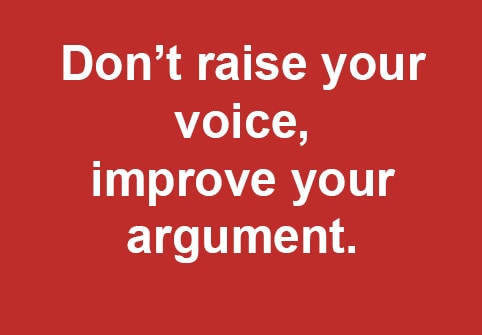Shifting from Persuasive Writing to Argumentative Writing: Where do you start?

In my sixteen years of teaching, I spent plenty of days passionately preparing my students to write persuasively for a variety of audiences. We practiced with prompts about driving ages, open-campus lunch policies, and television and video game violence. I would explain to students that they needed to include Ethos, Pathos, and Logos in their responses, and to really “sell” their ideas. A counterargument was a requirement, and then, as writers, they must “bring me back to your stance.” Effective writing does include these elements. Discussing these issues, learning how to develop an opinion/claim, and to persuade others to adopt it, or that it is right, is valuable. However, that is only part of what we should be asking students to do. I look back and I am a bit embarrassed by the isolated questions, the thoughtlessness of the topics, and the lack of rigor in the process. How simplistic. How boring! So what’s different now, and where do you start?
Now, we are asking our students to do much more challenging and meaningful writing. There are many ways to start, and many educators have and are sharing their wonderful insights. In the Riverside Unified School District in California we have been working very hard as a 7-12 English Language Arts team to transition to more relevant work (notice I do not say Common Core, though that is a big portion of what we do — regardless of what we call it, what we really want is to provide opportunities for students to read, write, listen, speak, and research effectively, and with confidence). Beginning in July, I started working with two amazing colleagues, Lorrie Cobain-Danelski and Lisa Kells, on this transition.
The first thing we did was create a framework for grades 7-12 which includes Enduring Understandings, Essential Questions (here is a huge list we share with our teachers), and Focus Standards for each quarter. Some of these are smoother than others at this point, being October, and having this be the “dress rehearsal,” but we are learning.
The second thing we did was design units of study using Understanding by Design. Teachers have the freedom to use our units, or to create their own as long as the unit outcomes and learning experiences match the level of rigor and engagement for students.
Next, we created purposeful argumentative essay prompts as a diagnostic tool for teachers. We used The New York Times Learning Network (organized by category) to find the prompts we thought best matched the EUs and EQs for the units. This site has a list of 200 prompts for argumentative writing. We chose prompts for 7-12 that connected to the units, and then created the assessment based on the EAP style of writing, this year being incorporated into the Smarter Balance Assessment students will take in 11th grade.
Finally, we set out to norm our teachers using a common Expository rubric, anchor papers, and an all-day “norming” day. 12th grade Expository teachers have been norming four times a year with Riverside Community College instructors and Alvord Unified teachers (a neighboring district), but 7-11 teachers have not normed as a district for quite some time. These norming days proved to be very beneficial, giving teachers an opportunity to collaborate with other grade-level teachers from their own site, and others. One question that continues to be asked is, “What are the biggest differences between persuasive writing and argumentative writing?”
Here are three differences between persuasive and argumentative writing:
- The goal with argumentative writing is not to take a stand and persuade, but rather to summarize a text, and discuss the extent to which you agree or disagree, providing solid evidence.
- Students can qualify with argumentative writing by providing reasons and examples from the text provided and from their previous readings, own experiences, and observations to support their opinions, and discuss the extent to which they agree or disagree.
- Argumentative writing recognizes the balance of incorporating different perspectives on the argument, but with solid support, argues distinctly for one.
Here is a helpful chart from the Vermont Reads Institute:
|
Persuasive Writing Vs. |
Argument |
| Claim based on Opinion | Claim (Opinion, Position, Hypothesis, Thesis Statement, Theory) |
| Not Always Substantiated Claim(e.g., Propaganda, Advertisements) | Substantiated Claim (Based on Relevant & Sufficient Evidence) |
|
“Pathos”—Appeal to Audience Emotion, Desires, Needs |
Some “Pathos” but emphasis is on“Logos”—Appeal to logical reasoning and evidence (e.g., Facts, Examples, Historical and Legal Precedents) |
| “Ethos”—Appeal to writer’s or speaker’s character, credentials, trustworthiness | “Ethos”—Appeal to writer’s or speaker’s credibility (more so than character); credibility is established through knowledge of subject matter and merits of reasons and factual evidence |
| Persuasive texts may make an “argument,” but they don’t always include elements of a formal argument | Include the following elements of Argument: |
| Warrants (Statements about How Evidence Supports Claims) | |
| Backing (Support for Warrants) | |
| May not take opposing views into account | Counterclaim (Opposing Argument) |
| Rebuttals (Respond to and Try to Refute) | |
| Heart of Critical Thinking |
The Online Writing Lab (OWL) at Purdue University is also a helpful resource for getting started with this type of writing, among other things. Writing at the next level for our students whether for college or for life, is argumentative. I would argue that all writing is argumentative — creating a solid thesis, and then defending it with evidence is an invaluable skill. We should know why we think what we think and be able to support that, not only with emotion, but with evidence.
My next post will focus on strategies you can use with your teachers and students once you have a starting point.
For more on writing instruction, see:




kristle
Hello! Persuasive texts may make an “argument,” but they don’t always include elements of a formal argument By the way the best paper writing service that I saw: http://speedypaper.net/